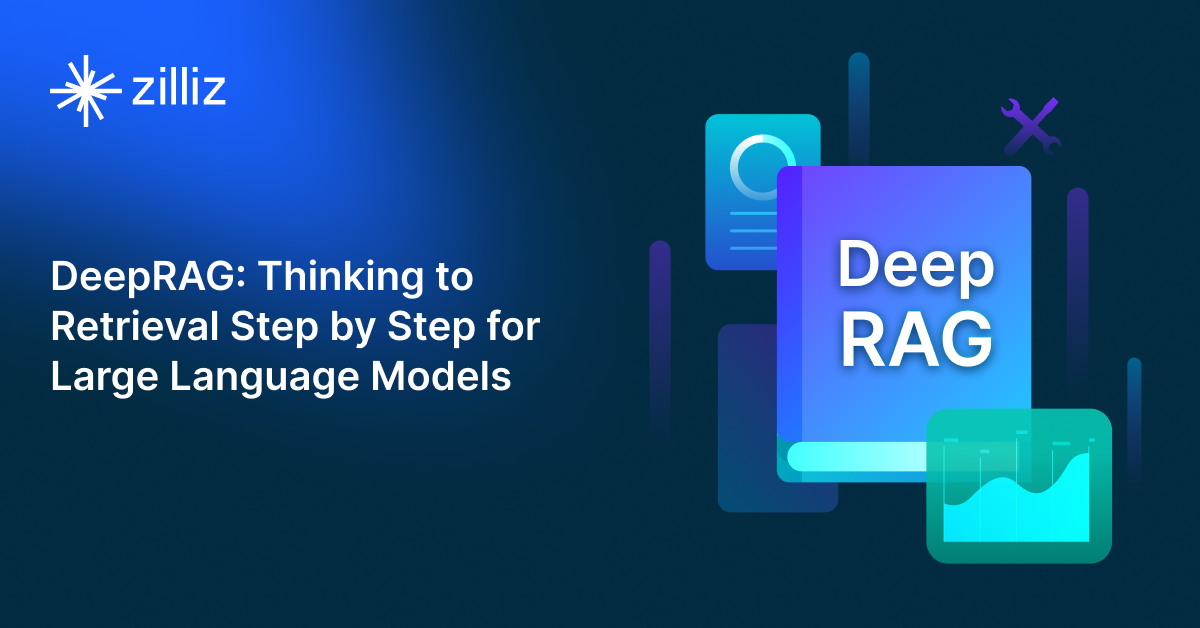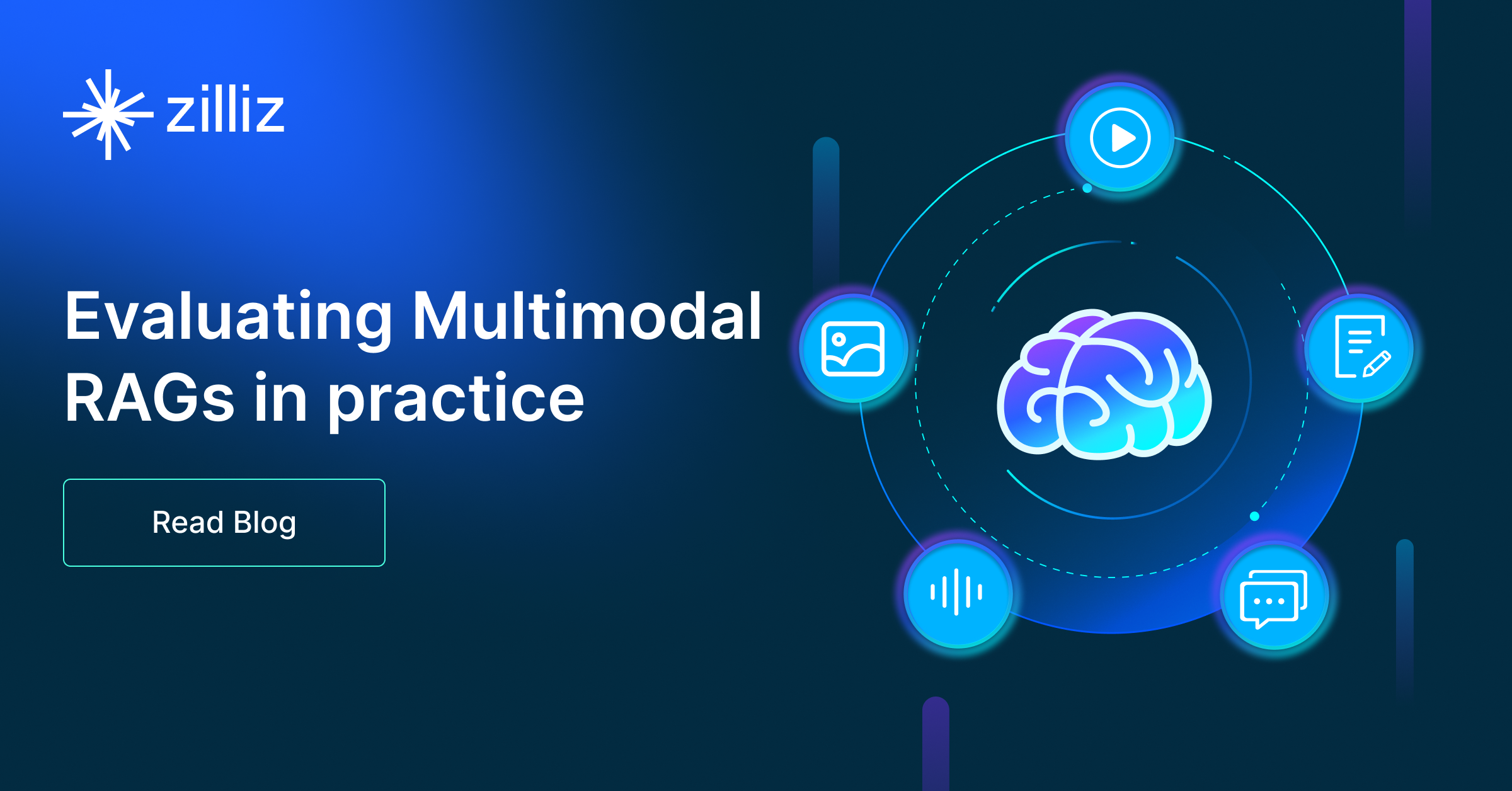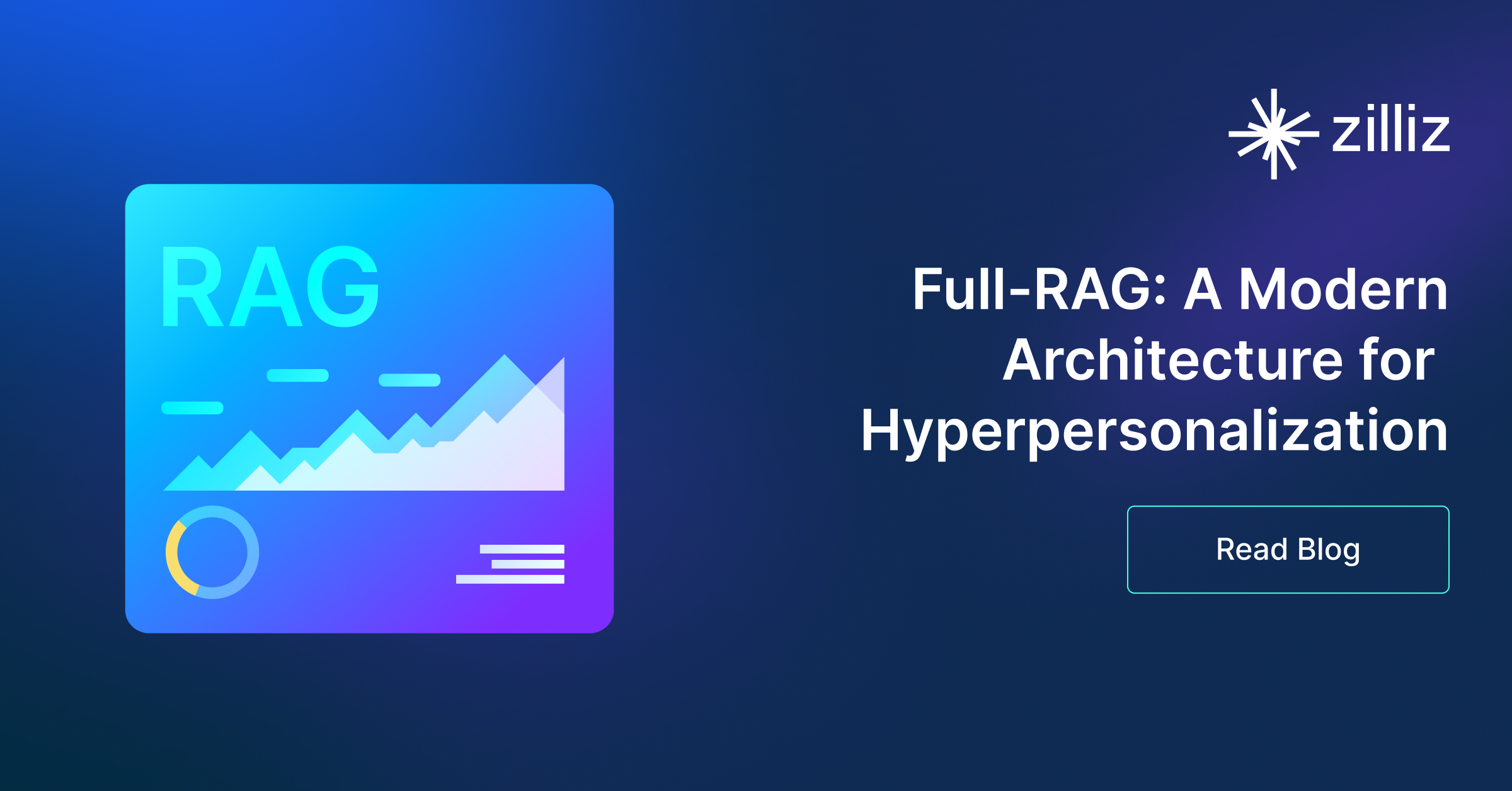Build RAG Chatbot with LangChain, Zilliz Cloud, NVIDA Llama 3 70B Instruct, and Amazon Titan Text Embeddings v2
Introduction to RAG
Retrieval-Augmented Generation (RAG) is a game-changer for GenAI applications, especially in conversational AI. It combines the power of pre-trained large language models (LLMs) like OpenAI’s GPT with external knowledge sources stored in vector databases such as Milvus and Zilliz Cloud, allowing for more accurate, contextually relevant, and up-to-date response generation. A RAG pipeline usually consists of four basic components: a vector database, an embedding model, an LLM, and a framework.
Key Components We'll Use for This RAG Chatbot
This tutorial shows you how to build a simple RAG chatbot in Python using the following components:
- LangChain: An open-source framework that helps you orchestrate the interaction between LLMs, vector stores, embedding models, etc, making it easier to integrate a RAG pipeline.
- Zilliz Cloud: a fully managed vector database-as-a-service platform built on top of the open-source Milvus, designed to handle high-performance vector data processing at scale. It enables organizations to efficiently store, search, and analyze large volumes of unstructured data, such as text, images, or audio, by leveraging advanced vector search technology. It offers a free tier supporting up to 1 million vectors.
- NVIDIA Llama 3 70B Instruct: This powerful model is designed for instruction-following tasks, leveraging its 70 billion parameters to deliver high-quality responses. It excels in generating detailed answers and engaging in complex dialogues, making it ideal for educational tools, customer support, and interactive applications that require nuanced understanding and guidance.
- Amazon Titan Text Embeddings v2: This model generates high-quality text embeddings, enabling nuanced semantic understanding and similarity comparisons. It boasts enhanced performance and scalability, making it suitable for tasks such as information retrieval, recommendation systems, and sentiment analysis. Ideal for applications needing robust and efficient language representation at scale.
By the end of this tutorial, you’ll have a functional chatbot capable of answering questions based on a custom knowledge base.
Note: Since we may use proprietary models in our tutorials, make sure you have the required API key beforehand.
Step 1: Install and Set Up LangChain
%pip install --quiet --upgrade langchain-text-splitters langchain-community langgraph
Step 2: Install and Set Up NVIDA Llama 3 70B Instruct
pip install -qU "langchain-nvidia-ai-endpoints"
import getpass
import os
if not os.environ.get("NVIDIA_API_KEY"):
os.environ["NVIDIA_API_KEY"] = getpass.getpass("Enter API key for NVIDIA: ")
from langchain.chat_models import init_chat_model
llm = init_chat_model("meta/llama3-70b-instruct", model_provider="nvidia")
Step 3: Install and Set Up Amazon Titan Text Embeddings v2
pip install -qU langchain-aws
from langchain_aws import BedrockEmbeddings
embeddings = BedrockEmbeddings(model_id="amazon.titan-embed-text-v2:0")
Step 4: Install and Set Up Zilliz Cloud
pip install -qU langchain-milvus
from langchain_milvus import Zilliz
vector_store = Zilliz(
embedding_function=embeddings,
connection_args={
"uri": ZILLIZ_CLOUD_URI,
"token": ZILLIZ_CLOUD_TOKEN,
},
)
Step 5: Build a RAG Chatbot
Now that you’ve set up all components, let’s start to build a simple chatbot. We’ll use the Milvus introduction doc as a private knowledge base. You can replace it with your own dataset to customize your RAG chatbot.
import bs4
from langchain import hub
from langchain_community.document_loaders import WebBaseLoader
from langchain_core.documents import Document
from langchain_text_splitters import RecursiveCharacterTextSplitter
from langgraph.graph import START, StateGraph
from typing_extensions import List, TypedDict
# Load and chunk contents of the blog
loader = WebBaseLoader(
web_paths=("https://milvus.io/docs/overview.md",),
bs_kwargs=dict(
parse_only=bs4.SoupStrainer(
class_=("doc-style doc-post-content")
)
),
)
docs = loader.load()
text_splitter = RecursiveCharacterTextSplitter(chunk_size=1000, chunk_overlap=200)
all_splits = text_splitter.split_documents(docs)
# Index chunks
_ = vector_store.add_documents(documents=all_splits)
# Define prompt for question-answering
prompt = hub.pull("rlm/rag-prompt")
# Define state for application
class State(TypedDict):
question: str
context: List[Document]
answer: str
# Define application steps
def retrieve(state: State):
retrieved_docs = vector_store.similarity_search(state["question"])
return {"context": retrieved_docs}
def generate(state: State):
docs_content = "\n\n".join(doc.page_content for doc in state["context"])
messages = prompt.invoke({"question": state["question"], "context": docs_content})
response = llm.invoke(messages)
return {"answer": response.content}
# Compile application and test
graph_builder = StateGraph(State).add_sequence([retrieve, generate])
graph_builder.add_edge(START, "retrieve")
graph = graph_builder.compile()
Test the Chatbot
Yeah! You've built your own chatbot. Let's ask the chatbot a question.
response = graph.invoke({"question": "What data types does Milvus support?"})
print(response["answer"])
Example Output
Milvus supports various data types including sparse vectors, binary vectors, JSON, and arrays. Additionally, it handles common numerical and character types, making it versatile for different data modeling needs. This allows users to manage unstructured or multi-modal data efficiently.
Optimization Tips
As you build your RAG system, optimization is key to ensuring peak performance and efficiency. While setting up the components is an essential first step, fine-tuning each one will help you create a solution that works even better and scales seamlessly. In this section, we’ll share some practical tips for optimizing all these components, giving you the edge to build smarter, faster, and more responsive RAG applications.
LangChain optimization tips
To optimize LangChain, focus on minimizing redundant operations in your workflow by structuring your chains and agents efficiently. Use caching to avoid repeated computations, speeding up your system, and experiment with modular design to ensure that components like models or databases can be easily swapped out. This will provide both flexibility and efficiency, allowing you to quickly scale your system without unnecessary delays or complications.
Zilliz Cloud optimization tips
Optimizing Zilliz Cloud for a RAG system involves efficient index selection, query tuning, and resource management. Use Hierarchical Navigable Small World (HNSW) indexing for high-speed, approximate nearest neighbor search while balancing recall and efficiency. Fine-tune ef_construction and M parameters based on your dataset size and query workload to optimize search accuracy and latency. Enable dynamic scaling to handle fluctuating workloads efficiently, ensuring smooth performance under varying query loads. Implement data partitioning to improve retrieval speed by grouping related data, reducing unnecessary comparisons. Regularly update and optimize embeddings to keep results relevant, particularly when dealing with evolving datasets. Use hybrid search techniques, such as combining vector and keyword search, to improve response quality. Monitor system metrics in Zilliz Cloud’s dashboard and adjust configurations accordingly to maintain low-latency, high-throughput performance.
NVIDIA Llama 3 70B Instruct optimization tips
NVIDIA Llama 3 70B Instruct is a high-precision model ideal for RAG applications requiring in-depth reasoning and analysis. Optimize retrieval by using hierarchical document ranking to filter only the most relevant passages, reducing unnecessary token consumption. Structure prompts with a clear separation between user queries, retrieved context, and system instructions for optimal performance. Keep temperature between 0.1 and 0.3 for factual consistency while fine-tuning top-k and top-p for better control over response diversity. Leverage NVIDIA’s TensorRT-LLM and optimized inference stacks to accelerate model execution and reduce latency. Use batching strategies to improve throughput for high-volume workloads. If deploying multiple models, assign Llama 3 70B to handle complex queries requiring deep contextual understanding while reserving lighter models for faster, low-complexity tasks.
Amazon Titan Text Embeddings v2 optimization tips
Amazon Titan Text Embeddings v2 is a scalable model that performs well in large-scale text retrieval tasks. Optimize retrieval by preprocessing input text to remove noise and focus on high-value content, which can improve the efficiency of embedding generation. Use vector compression techniques like quantization or dimensionality reduction to reduce memory and storage costs without significantly impacting retrieval accuracy. When querying, implement hybrid search strategies combining dense vector search and traditional keyword-based search to improve retrieval speed and relevance. For large-scale applications, batch text processing to reduce API calls and enhance throughput. Cache high-demand embeddings to minimize redundant processing and speed up query response times. Regularly update and retrain the embedding model to maintain accuracy with fresh data.
By implementing these tips across your components, you'll be able to enhance the performance and functionality of your RAG system, ensuring it’s optimized for both speed and accuracy. Keep testing, iterating, and refining your setup to stay ahead in the ever-evolving world of AI development.
RAG Cost Calculator: A Free Tool to Calculate Your Cost in Seconds
Estimating the cost of a Retrieval-Augmented Generation (RAG) pipeline involves analyzing expenses across vector storage, compute resources, and API usage. Key cost drivers include vector database queries, embedding generation, and LLM inference.
RAG Cost Calculator is a free tool that quickly estimates the cost of building a RAG pipeline, including chunking, embedding, vector storage/search, and LLM generation. It also helps you identify cost-saving opportunities and achieve up to 10x cost reduction on vector databases with the serverless option.
 Calculate your RAG cost
Calculate your RAG cost
What Have You Learned?
What an incredible journey we've embarked on together! Throughout this tutorial, you've gained hands-on experience with the powerful combination of a comprehensive framework, a robust vector database, a cutting-edge large language model, and an innovative embedding model, all designed to create a state-of-the-art Retrieval-Augmented Generation (RAG) system.
We started by exploring how the LangChain framework weaves all these components into a cohesive unit, allowing for seamless integration and streamlined operations. This makes the development process not only efficient but also fun! Next, we dove into Zilliz Cloud, where the vector database facilitates rapid and intelligent searches, ensuring that your system can access relevant data in the blink of an eye. With the NVIDIA Llama 3 70B Instruct model, we harnessed conversational intelligence that can truly engage users and generate context-aware responses, taking interactions to new heights. And let’s not forget the Amazon Titan Text Embeddings v2, which provides rich semantic representations that empower your RAG applications with deeper insights.
Along the way, we shared optimization tips and introduced tools like the free cost calculator to help you work smarter, maximizing your results while minimizing expenses.
Now it’s your turn! Take everything you’ve learned and start building, optimizing, and innovating your own RAG applications. The possibilities are endless, and the future of intelligent conversation is in your hands. So go ahead, unleash your creativity, and make your mark in the world of RAG systems! You’ve got this!
Further Resources
🌟 In addition to this RAG tutorial, unleash your full potential with these incredible resources to level up your RAG skills.
- How to Build a Multimodal RAG | Documentation
- How to Enhance the Performance of Your RAG Pipeline
- Graph RAG with Milvus | Documentation
- How to Evaluate RAG Applications - Zilliz Learn
- Generative AI Resource Hub | Zilliz
We'd Love to Hear What You Think!
We’d love to hear your thoughts! 🌟 Leave your questions or comments below or join our vibrant Milvus Discord community to share your experiences, ask questions, or connect with thousands of AI enthusiasts. Your journey matters to us!
If you like this tutorial, show your support by giving our Milvus GitHub repo a star ⭐—it means the world to us and inspires us to keep creating! 💖
- Introduction to RAG
- Key Components We'll Use for This RAG Chatbot
- Step 1: Install and Set Up LangChain
- Step 2: Install and Set Up NVIDA Llama 3 70B Instruct
- Step 3: Install and Set Up Amazon Titan Text Embeddings v2
- Step 4: Install and Set Up Zilliz Cloud
- Step 5: Build a RAG Chatbot
- Optimization Tips
- RAG Cost Calculator: A Free Tool to Calculate Your Cost in Seconds
- What Have You Learned?
- Further Resources
- We'd Love to Hear What You Think!
Content
Vector Database at Scale
Zilliz Cloud is a fully-managed vector database built for scale, perfect for your RAG apps.
Try Zilliz Cloud for Free


